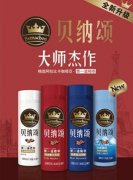Coffee terminology that must be known to coffee professionals! Take an inventory of coffee technical terms what is coffee

Coffee has always been a favorite of Xiaobian. Now more and more friends have joined the coffee family. Some like instant coffee, some like to brew coffee beans themselves, and some like coffee flowers (related reading: What appliances do coffee flowers need?). Today, Xiaobian will tell you some professional coffee terms. I don't know if you are a coffee expert ~! Flavor [Flavor]
It is the overall impression of aroma, acidity, and alcohol. It can be used to describe the overall feeling of coffee.
Acidity
It is all the sour and strong characteristics of coffee grown in the plateau. The sour acrid is different from bitter or sour, and it has nothing to do with pH value, but it is a fresh and lively quality that promotes coffee to exert functions such as boosting the mind and cleansing the taste.
Body [Alcohol]
Is the conditioning of coffee after drinking, in the tongue to coffee leaves some taste. Alcohol varies from watery to light, medium, high, fatty, and even syrupy in some Indonesian coffees.
Aroma [smell]
Aroma refers to the aroma and aroma emitted by coffee after conditioning. Bouquet is a less commonly used word for the taste of ground coffee. Aroma is usually specific and comprehensive. Words used to describe Aroma include: caramel, charred, chocolate, fruity, grassy, malty, rich, rich, spicy, etc.
Bitter
Bitterness is a basic taste, and the sensory area is distributed in the root of the tongue. The bitterness of dark roasts is deliberately created, but the most common cause of bitterness is too much coffee powder and too little water. Bitterness is not the assent word for sour.
Bland [Light]
Coffee grown in lowlands and usually quite light and tasteless. Coffee with too little powder and too much water will also have the same light effect.
Briny
Coffee brewed, if overheated, will produce a salty taste. Some coffee shops have coffee that tastes like this.
Earthy
Usually used to describe spicy and earthy Indonesian coffee. But these references to mud do not refer to coffee beans stained with mud taste. Some commercial coffees are mixed with cheap coffee, and the muddy taste may turn dirty, apparently because of the drying and rough processing techniques used to spread the beans on the ground.
Exotic
Coffee has a unique aroma and special smell, such as flowers, fruits, spices like sweet characteristics. Coffee grown in East Africa and Indonesia usually has this characteristic.
Mellow [Aromatic Alcohol]
Coffee is an adjective used to describe coffee with low to medium acidity and good balance.
Mild
It indicates that a coffee has a harmonious and delicate flavor. Highland latin american coffee usually described as mild. It is also a term used in coffee circles to refer to all highland coffee except Brazil.
Soft
A coffee with low acidity, such as Indonesian coffee. It can also be described as aromatic or sweet.
Sour
A taste zone located primarily on the back of the tongue and characteristic of light roasted coffee.
Spicy [Spicy]
A flavor or smell reminiscent of a particular spice. A type of highland coffee (especially aged coffee) produced in Indonesia, with a sweet cardamom smell.
Strong
Technically, it describes the number of advantages and disadvantages of various tastes, or the relative proportion of coffee and water in a particular conditioning product. In colloquial usage, intense describes the intense flavor of dark roast coffee. In addition, it misleads people into the illusion that it contains a lot of caffeine. In fact, canned light coffee is high in caffeine because it contains more decaf coffee.
Sweet [Sweet]
A commonly used adjective, almost fruity in nature and associated with alcohol. Coffee grown in the highlands of Costa Rica usually has a strong flavor.
Wild
Coffee has extreme taste characteristics. If ordinary people could not accept it, they would call it odd, but it could also be an attractive feature, depending on personal preferences.
Winy
Describe an attractive flavor reminiscent of wine. Fruity acidity and smooth body, creating a special flavor contrast. Kenyan coffee is the best example of wine flavor.
Important Notice :
前街咖啡 FrontStreet Coffee has moved to new addredd:
FrontStreet Coffee Address: 315,Donghua East Road,GuangZhou
Tel:020 38364473
- Prev

The "King" of Coffee the new Benazon Coffee makes its magnificent debut, Benazon Coffee flavors Allah.
The new Benazon has been fully on the market, and the crown on the new package not only highlights the inheritance of Benazon king, but also highlights the king demeanor of Benazon coffee. Benazon has changed not only the packaging, but also the taste. Benazon coffee selection Arabica coffee beans, Arabica coffee beans account for about 70% to 80% of the world's total coffee bean production, rich and delicate, rich flavor, pure flavor.
- Next

What is the difference between cocoa and coffee? What is coffee? What do cocoa and coffee have?
Cocoa and coffee are the drinks we see most on Starbucks menu. many friends think that cocoa and coffee are the same plant, but in fact, cocoa and coffee are very different. Today, the editor will talk about the difference between cocoa and coffee. Cocoa: cacao (also known as cocoa.) One of the three largest beverage plants in the world, native to tropical America, which can be used as drinks and chocolates.
Related
- Why is the espresso extraction ratio 1:2? Espresso extraction solution Water volume water temperature pressure powder amount Share!
- How about hand-brewed coffee with rose summer coffee beans in Kafa Forest? What coffee producing area does the Kafa Forest in Ethiopia belong to?
- Brazilian coffee yellow bourbon brewed flavor characteristics and origin share! What grade is red bourbon coffee?
- How to judge the roasting degree/concentration/filtration method of coffee beans from the color of coffee soup? What is the difference between dark and light roast coffee?
- Why are the coffee in some coffee shops not enough after being frozen? What should I make up for my American latte cappuccino coffee after being frozen?
- How much water does it take to steam coffee by hand? Why is the coffee brewing and steaming time 30 seconds? What is the purpose of steaming coffee?
- The suspected drink contains too much caffeine! Overlord Tea Lady responds urgently!
- Starbucks rejects antique paper coupons?! Netizen: Missed marketing opportunities!
- What ratio of water temperature and ground does the smart cup method use to press coffee? The difference between brewed coffee and filtered coffee?
- What is the standard process for the purpose of coffee cup testing? What is the difference between hand-brewed coffee and cup testing?

